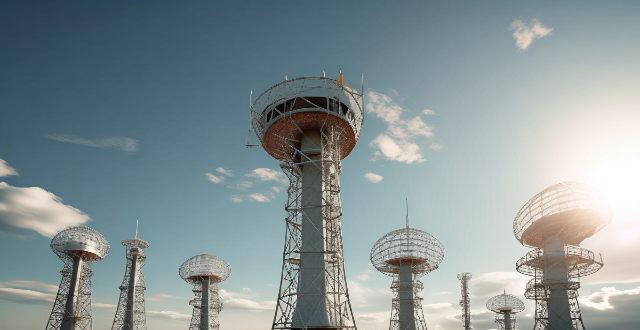Solar flares, intense bursts of radiation from the sun's atmosphere, can disrupt communication systems on Earth. This includes shortwave radio signals, satellite communications, and other terrestrial networks. The effects range from signal quality disruption and frequency deviation to satellite link disruptions, GPS accuracy issues, and even physical damage to satellite hardware. While these impacts vary, organizations involved in critical communication operations must be aware of the risks and implement mitigation strategies to minimize potential disruptions.

Can Solar Flares Cause Communication Interference?
Introduction
Solar flares are intense bursts of radiation that originate from the sun's atmosphere. These flares can release a significant amount of energy, which can potentially disrupt various communication systems on Earth. In this article, we will explore the relationship between solar flares and communication interference.
Main Body
Impact of Solar Flares on Communication Systems
1. Shortwave Radio Signals
- Disruption of Signal Quality: Solar flares can cause ionospheric disturbances, leading to poor signal quality in shortwave radio transmissions. This results in reduced clarity and increased noise levels during radio communications.
- Blackouts and Fading: Severe solar flares can cause blackouts or complete loss of signal for short periods, making it difficult for emergency services and other critical operations to maintain reliable communication channels.
- Frequency Deviation: The ionospheric changes induced by solar flares can also lead to frequency deviation, causing signals to be received at unexpected frequencies, further complicating communication efforts.
2. Satellite Communications
- Satellite Link Disruptions: Solar flares can interfere with satellite links, affecting both commercial and military satellite communications. This disruption can result in lost data packets, degraded video quality, and interrupted voice communications.
- GPS Accuracy Issues: Solar flares can also affect the accuracy of Global Positioning System (GPS) signals, leading to errors in navigation and timing calculations. This is particularly concerning for industries such as aviation and shipping, where precise location information is crucial.
- Satellite Hardware Damage: In extreme cases, solar flares can cause physical damage to satellite hardware, including solar panels and electronic components, resulting in costly repairs or replacements.
3. Other Communication Systems
- Terrestrial Network Disruptions: While less common than satellite or shortwave radio interference, solar flares can also impact terrestrial networks, including mobile phone networks and internet connectivity. This may manifest as temporary service outages or degraded network performance.
- Power Grid Disturbances: Solar flares can induce current surges in power grids, potentially leading to widespread electrical outages if not properly managed by utility companies. These outages can further exacerbate communication issues by disrupting power supplies to critical communication infrastructure.
- Pipeline Corrosion: Long-term exposure to solar flare activity can contribute to pipeline corrosion, affecting the transportation of oil and gas resources. This issue is primarily relevant to countries with extensive pipeline networks used for energy distribution.
Conclusion
In conclusion, solar flares do have the potential to cause communication interference across various systems, ranging from shortwave radio signals to satellite communications and even terrestrial networks. While the impact of solar flares on communication systems varies depending on several factors, such as flare intensity and system resilience, it is essential for organizations involved in critical communication operations to be aware of these risks and implement appropriate mitigation strategies to minimize potential disruptions.